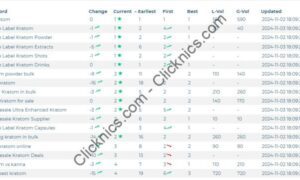Colleges and universities receive student inquiries through forms, WhatsApp, emails, websites, and social media. But the real problem begins when these leads get lost in spreadsheets, or worse, are never followed up.
Institutions must be asking:
- Why aren’t leads converting, even when we have enough inquiries?
- Which campaign brought the right students?
- Why do some counsellors get more conversions than others?
The reason often lies in how leads are managed. Not in how many leads one receives, but in how well each one is tracked, followed up, and closed.
This is where the best CRM for lead management plays a vital role.
A smart CRM helps track every inquiry, assigns it without confusion, engages every lead on time, and tells you exactly what’s working. That’s how student admissions become smooth, fast, and data-backed.
Centralised Lead Capture and Organisation for Streamlined Admissions
When every inquiry goes into a single system, no one misses a follow-up. Whether it’s a form filled from the university website or leads coming from marketing campaigns, a good lead management tool should capture it all.
Here’s what a centralised system brings to the table:
- One place for storing leads from all sources
- Auto-checks to avoid repeated leads
- Teams can check lead progress at any time
- Teams act quickly when all data is in one place
This kind of setup is a must for any modern education management software. It keeps the pipeline clean, organised, and ready for conversions.
Identifying Primary, Secondary, and Tertiary Lead Sources for Accurate Attribution
Marketing budgets get wasted when we do not know what works.
When a lead lands on the form, most teams assume it came from the last ad clicked. But in reality, that student may have seen a reel on Instagram, opened an email, and only later clicked an ad.
That’s why tracking only the last touchpoint is not enough. The best CRM for lead management goes deeper. It segregates the leads into primary, secondary and tertiary contributors. This can help higher education identify the channels that significantly impact lead acquisition and engagement.
Tracking Every Lead Journey with Multi-Touchpoint Mapping
Not all leads convert the moment they reach out. Some come in through an ad, disappear for a week, then check a course page, and later ask a question on WhatsApp.
Mapping this journey helps institutions know when and how the lead should be followed up. A strong education management software allows admissions teams to:
- Track all interactions
- See application flow
- Spot behaviour patterns
Smart Automation for Nurturing Leads Through Personalised Communication
Manual follow-ups waste time and often lead to poor conversions.
Using a CRM that supports smart automation changes this completely. Institutions can now set up journeys where the system reaches out to students at the right time, with the right message.
Here’s how it works:
- Pre-set messages based on actions
- Multi-channel outreach
- Triggers for re-engagement
- Custom journeys for different programs
This keeps conversations going, even when teams are busy. It builds trust, shows professionalism, and improves the chances of conversion without extra effort.
Efficient Lead Allocation Using Automated Distribution Logic
If five counsellors are handling leads, how do we make sure no one is overburdened?
Manual assignment often leads to mistakes—some leads get delayed, some are missed entirely. To avoid this, CRMs now offer automated lead allocation.
Here’s how it works:
- Leads are shared one by one to keep the load balanced
- Round robin logic
- Assign leads based on region, course, or campaign
This improves both speed and quality of response. And that’s what makes a tool the best CRM for lead management—not just features, but the outcomes it delivers.
Smart Lead Allocation Based on Course, Location, or Lead Preferences
When hundreds of leads land daily, finding the right ones quickly becomes a challenge. A high-potential lead might be buried under a pile unless the CRM gives sharp filters and a neat interface.
The best CRM for lead management always includes:
- Distribute leads equally among counsellors.
- Automate the process of assigning new leads.
- Quickly find and prioritise leads using dynamic search options.
- Customise lead distribution according to specific factors like course preferences, geographical location, or other conditions.
- Adjust the number of leads displayed per page.
This is especially useful for large teams where roles are segmented.
Conclusion
Handling leads without structure leads to delays, confusion, and low conversions. The best CRM for lead management brings everything—capture, communication, automation, tracking, and assignment—into one organised flow.
From identifying where leads come from to assigning them based on course or location, every step becomes sharper and faster. Teams respond on time, campaigns get smarter, and students receive the attention they expect.
With the right lead management tools, institutions stop guessing and start acting based on real insights. This shift not only improves enrolment rates but also brings long-term efficiency to the entire admissions process. A data-backed system is no longer a choice—it’s the foundation of modern education management software.





























